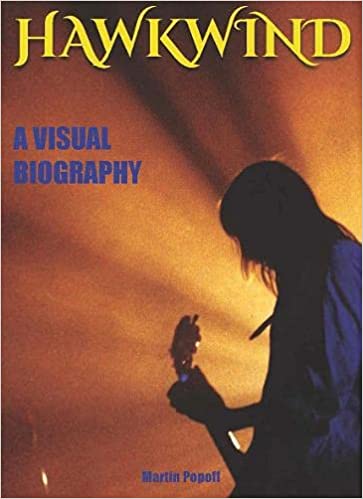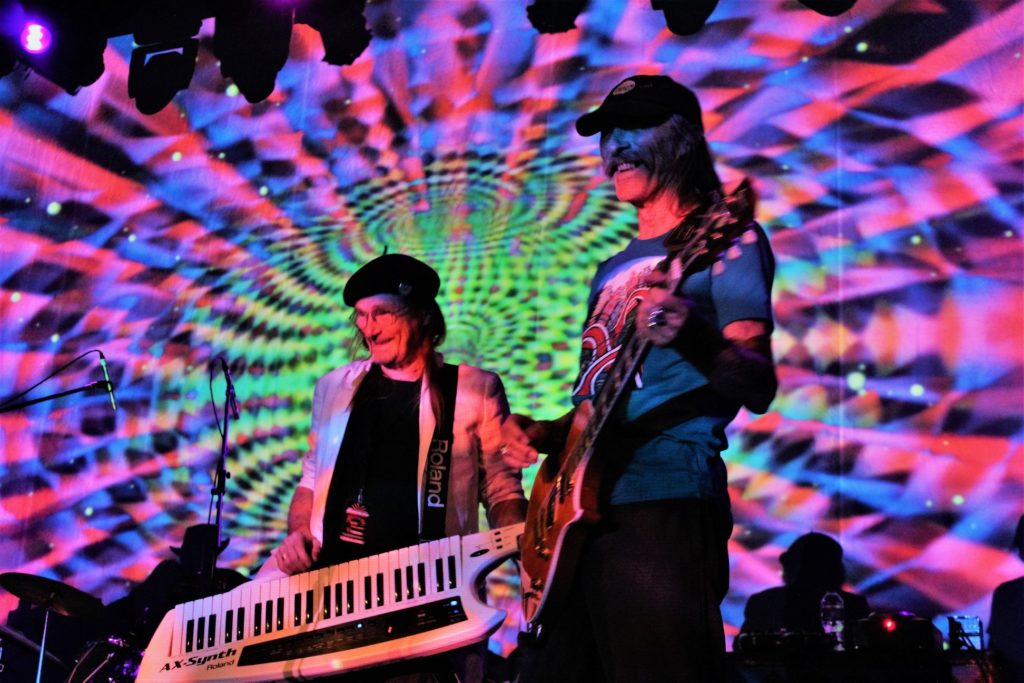
YORK poet, musician, academic and photographer Oz Hardwick is exhibiting “very much a labour of long-standing obsession” at City Screen, York.
On show in the upstairs corridor until February 19 are his photographs of Hawkwind, one of the earliest space rock groups, who formed in Ladbroke Grove, London, in 1969 and have since gone through many incarnations, taking in hard rock, prog rock and psychedelic rock.
Lemmy, later of Motorhead, and Silver Machine, the June 1972 single that peaked at number three, are but part of a story that Oz has photographed from 1980 to 2021.
For many years he has focused on poetry and the academic world, way back in the 1970s, Plymouth-born Oz trained as a photographer, combining that skill with his passion for music and alternative culture.
Over the years, he has contributed to many album covers and books, most recently being the main photographic contributor to Martin Popoff’s Hawkwind: A Visual Biography, published by Wymer last year.
Oz exhibited a selection of his photographs at a festival at the Alhambra in Morecambe in 2018. “Then I was going to have a little exhibition to coincide with the band’s York Barbican show on their 50th anniversary but that didn’t quite work out,” he says.
“And so, it was going to be City Screen to coincide with the 50th anniversary of their first album [August 1970’s Hawkwind by Hawkwind], which was in 2020, so that didn’t happen either.
“But here it is at last, upstairs in City Screen, a bit of a celebration of a countercultural institution that’s probably been more influential than most people realise and is still going strong.”

Here Oz answers CharlesHutchPress’s questions about that “labour of long-standing obsession”.
What first drew you to Hawkwind, Oz?
“In 1972, I was a 12-year-old boy who loved music, with a particular enthusiasm for glam rock and a growing interest in heavy rock that came via my elder sister’s friends. I’ve read many times how David Bowie’s Starman on Top Of The Pops ‘changed everything’ for many people, and I remember the performance.
“However, it was the week after that Silver Machine appeared and for me that was really exciting. It’s up on YouTube now, but in those days all your friends would be watching the same thing at the same time, and I recall having to ask a friend the next day what this band had been called, because the clip – filmed in concert and cobbled together to accompany the single (and watched on a black-and-white TV) – had absolutely blown me away.
“I had no idea what was making some of those noises, the energy was like nothing I’d heard, and the band looked unhinged. It wasn’t just an exciting new group; it was a little glimpse of an alternative universe, which looked way more exciting than the one I was in. These people weren’t dressing up like Bolan and Bowie (who I really liked, by the way); there was a sense of this being real.
“And then, when I finally acquired an album the following year – the monumental Space Ritual – there were passages of poetry accompanied by unearthly electronic sounds. I’d picked up a love of poetry by osmosis from my grandfather who lived with us.
“He’d had no education, really, but had a passion for the Lake Poets and Burns, who were deeply attached to the places where he’d grown up and become a farm worker, and this was something which set that linguistic energy into the cultural context in which I was growing up – pop music, Apollo-era science fiction, and so on. And the artwork was amazing, too. It was the full package.”
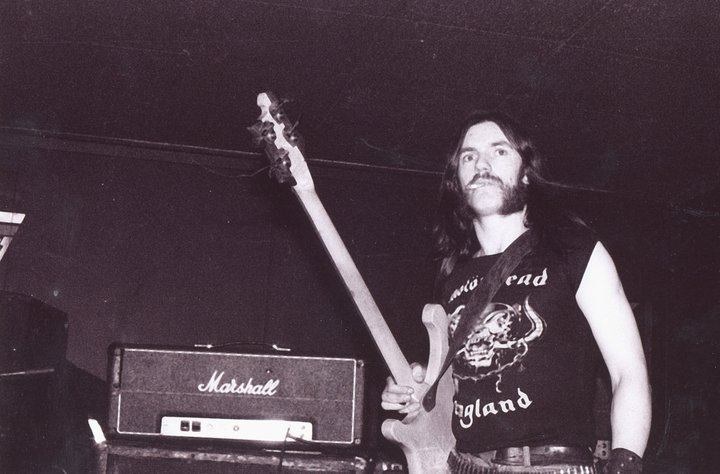
Did you meet Lemmy [Hawkwind’s bass player from 1972 until being fired in 1975, when he formed Motorhead]? If so, what are your memories?
“Lemmy was still in the band when I first saw Hawkwind in Plymouth Guildhall in February 1974, but I didn’t meet him until the early Motorhead days.
“When they started out, they were getting awful reviews and nobody much was interested as they were slogging around fairly grotty little clubs. I, of course, turned up to their first Plymouth gig early – I always wanted to get down the front – and the first few of us to arrive were roped into carrying a grand piano down the fire escape.
“Those were the days. It meant we got to hear the soundcheck, and I think we were let in free, too. And there was a bit of a tongue-tied greeting.
“They played a few times locally while they were still struggling along, and the band were always really welcoming, chatty, funny and down-to-earth. Then they went off to be pretty huge and no longer played to small but passionate audiences in sticky-floored clubs. “However, several years later I was at an open-air Hawkwind gig at Crystal Palace – the legendary event at which they shared the stage with Vera Lynn – and during the afternoon I happened to be walking vaguely towards Lemmy in the field.
“Amazingly, he stopped me and asked how I was. He was a fully-fledged rock star by then, but he still remembered those people who supported the band when there weren’t all that many of us. And I don’t think many people would be like that.”

You know the drill: “First three numbers only. No flash”. What are the challenges of photographing a band in concert under those circumstances?
“They will insist on moving about! I think the particular challenge with rock music is the lighting changes. It’s true with many artists, but Hawkwind were always particularly tricky as there was never much light on the band, who were quite often shadowy figures against brighter backgrounds. There’s still some of that, but less so than there used to be.”
Do you prefer photographing a band on stage, in the studio or off-guard?
“I much prefer photographing bands on stage. I’ve done some more posed off-stage work from time to time, but my enthusiasm has always been for capturing artists doing what they do, rather than imposing myself too much on things.
“When I was training as a photographer, I got really into theatre work, and it grew out of that, I think. Also, I’m a very socially awkward person (cripplingly so when younger), so it’s good to vanish into the background.
“In relation to this, I have to say how generous Hawkwind were, letting this awkward young bloke with a camera onto the side of the stage, into the dressing room, and so on. Again, I think this is probably quite unusual, to say the least.”
Where and when did you train in photography?
“I was at Plymouth College of Art in the late 1970s. I’d already learned the basics there on Saturday mornings while I was at school and I’d taken an O-level, so it was the logical next step – and I had no idea what else I might do.
“I’ve never been very career oriented. I’m now professor of creative writing over at Leeds Trinity University, but it’s not something I ever intended: I just always wanted to create things and was looking for ways to do so that worked for me. These days I only do a little bit of photography and it’s mostly writing, but they’ve both been constants for years, with just the balance shifting.”

You describe Hawkwind as a “countercultural institution”. In what ways?
“They emerged from that vibrant countercultural movement which had a bit more edge and political substance, which drew on agit-prop theatre, cutting-edge graphic design, the alternative press, and so on.
“They were effectively the ‘house band’ of that culture, supporting various causes, and while things have changed immensely, they have remained on the edge. They were at the heart of the free festival culture of the 1980s, for example, and they still have close associations with the Sea Shepherd and wildlife charities in particular.
“And they are a band who have evolved their own community, too, with their own small festivals and also taking artists under their wing to an extent.”
How have Hawkwind “probably been more influential than most people realise”?
“Anyone with a vague interest in ‘classic’ rock music will know Silver Machine but the chances are good that they won’t know anything else. Their influence is disproportionate, though.
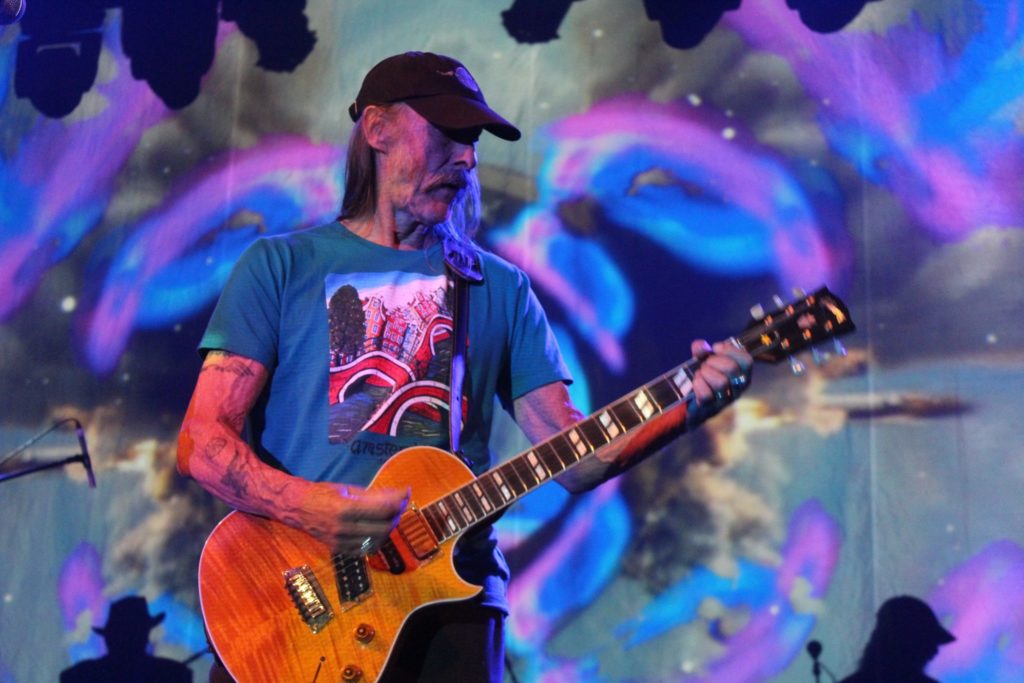
“Because of the directness of their music and their disdain for the mainstream, they were a major – and frequently cited – influence on punk rock, while most of their contemporaries were being derided.
“Their experiments with electronics fed into ambient and New Age soundscapes and that was one of the roots of synth-pop, and the extended, repetitive structures are one of the foundations of the dance music that evolved from the late 1980s and continues to do so. In the diverse niches of contemporary alternative rock, they’re pretty much everywhere.”
Playing devil’s advocate, what does it take for a band to survive for 53 years on one hit?
“Now, that’s a complex one to answer, but part of it, I suspect, is that there was just the one hit. The follow-up, Urban Guerilla, was famously withdrawn amidst controversy as its release coincided with terrorist attacks, and that was pretty much it for pop stardom.
“Instead, they used the money from Silver Machine’s success to fund the elaborate staging of their ambitious Space Ritual tour, which led to the double album that is still regularly cited as one of the best live rock records ever.
“With the live reputation they built up, they didn’t really need to be on Top Of The Pops. I guess the ‘what if?’ scenario raises the question of whether, if they had managed a couple of follow-up hits, they might have had a brief flare at the top and just disappeared once they started slipping down the ratings.
“Interestingly, a couple of albums in recent years have made higher chart placings than anything they’ve released since the mid-’80s, so things haven’t worked out too bad. And, of course, they still have the instantly recognisable big hit on pretty much every ’70s rock compilation that gets released, which in itself is one up on thousands upon thousands of bands.”
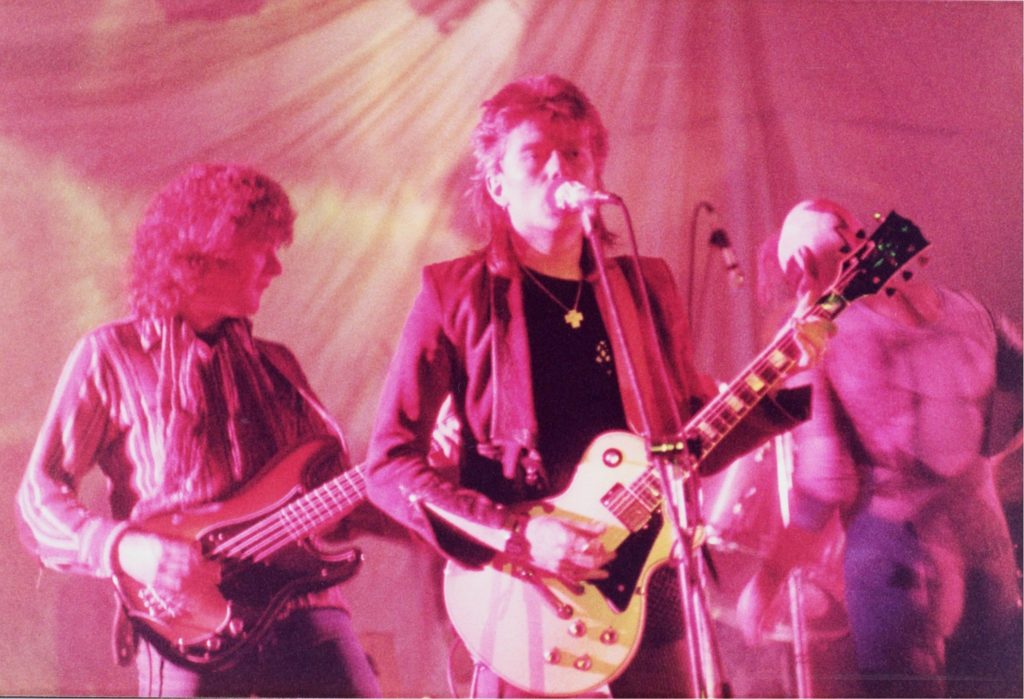
When did you first photograph Hawkwind; when did you last photograph them?
“My earliest (not great) photos are from 1980, the most recent from 2021. As it happens, though, the first time I ever took a camera to a gig was a Motorhead show in, I think, 1978, so there’s a connection there.”
What is the story behind you exhibiting your Hawkwind photos at a festival in 2018?
“The band organise their own little festivals and suchlike. In 2018, they had a weekend at the Alhambra in Morecambe, which was put together with poet, performer and all-round good guy Matt Panesh, to contribute towards keeping this beautiful old theatre open in quite a deprived part of the country.
“Hawkwind played a couple of times, along with assorted friends and relations; there were performances of plays by the late Robert Calvert (who, along with mainstay Dave Brock, wrote Silver Machine) and amongst the peripheral events and attractions I had a small photographic exhibition, with a number of pictures that had been on album covers, in books, and so on.”
How did you select the photos now on show in the City Screen corridor?
“The exhibition features most of those I had printed for Morecambe, along with a few more oldies and some taken in 2021. Though it was another terrible year for the performing arts, Hawkwind managed a couple of shows.
“The highlight was definitely their Hawkfest over a sunny weekend in north Devon last summer. With a little under a thousand attendees and a great line-up – including two sets by Hawkwind and various members playing with other bands – and a lovely bunch of like-minded people getting together after months of lockdowns, it was a wonderful celebration of the music and of that community I mentioned earlier. There are a few photos from that weekend.”

How has the art of rock music photography changed over the past 40 years?
“I think it’s changed in the way all photography has changed. In the 1980s and 1990s, you’d really read the performance and get a few gems from your 36 or maybe 72 frames. Nowadays, anyone with a phone can get a couple of good shots from the 600 they take, all of which they upload onto Facebook.
“If I can get a bit cosmic for a second, though, the relationship between a photographer and the performance is very, very different. There’s an intensity of focus in the moment, coupled with a kind of acquired second sight, whereas I suspect someone waving their phone over their head is outside the moment. But we can maybe talk about ‘art’ another time!”
Which camera do you favour?
“The shorthand techie answer is Nikon for film and Canon for digital. Really, though, it’s anything that can capture a decent image (and most can) because all a camera does is capture what you see. It’s much more about looking than technology. As an aside, I do rather like seeing what the flaws in really poor cameras can do – I do like a bit of chaos.”
Do you keep a list of the album covers and books to which you have contributed photographs?
“I’m really bad at keeping records. I’ve built up quite a body of work in both writing and photography and am generally looking at the current project and the next thing. In terms of Hawkwind, the photos that have given me most satisfaction are the front cover and booklet of The Flicknife Years box set of 1980s’ recordings.
“I was following the band all over and really immersing myself in that wonderful world I glimpsed on Top Of The Pops back in ’72, and the idea of having something on the front of an album just seemed like fantasy.
“There were two United States reissues in the’90s – Zones and Do Not Panic – that came with posters of my photos, which were special to me in themselves, but also my parents had them on their hall wall for the rest of their lives and would proudly show them to all visitors. “Beyond that, there are a lot of album covers by the band and also off-shoots (there are a lot of ex-members after 53 years).
“Of the books, I’ve a number of pictures in Ian Abrahams’ Hawkwind: Sonic Assassins, the revised edition of which has one of mine on the front; and last year’s Hawkwind: A Visual Biography, by Martin Popoff, has well over 200 of my pictures, including the front cover. “Again, there are other books and magazines and so on. None of which I could even have imagined as I sat dumbstruck in front of that rented black-and-white telly half a century ago.”
Oz Hardwick’s Hawkwind exhibition runs at City Screen, York, until February 19.
